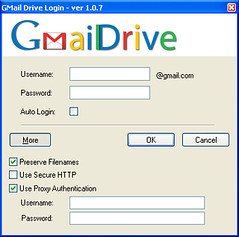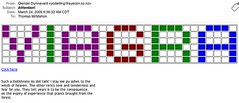By Carl Weiss & Hector Cisneros
 |
| Courtesy of pxhere.com |
Since WWW also stands for the Wild , Wild West, we can think of email as a major hero/antihero that has popularized the internet. While email has been a godsend and a money saver for business, at the same time it has cost us billions and has made many of us really really mad.
For more than a decade email marketing has gotten a bad reputation due to spamming. But what many savvy businesspeople fail to grasp is that fact that email marketing can be one of the best tools available to promote their business and reel in the fish.
What’s New (and Not So New)
The good news, email is still mostly free. On top of that, email newsletters and direct email marketing is still mostly free! If you are like most business owners, then you spend a considerable amount of time and money trying to create qualified leads for your sales staff. Having owned, operated and/or managed a number of thriving businesses over the years, I have come to appreciate the fact that many forms of lead generation provide great results. This includes leads generated by newspaper ads, coupons, yellow page ads, and direct mail. While these forms of lead generation systems have proven to be effective at making our phone ring in the past, they have also proven time consuming, hard to track and expensive.
| Email Icon (Photo credit: Wikipedia) |
What Works (and Works Well)
Sending the same offer or newsletter via email on the other hand won’t cost you more than the time it takes to craft the offering. While there is a right way and a wrong way to go about creating a legitimate email database, if you belong to networking groups, attend business functions, or in other ways come into contact with potential customers, getting permission to send them a monthly newsletter is as simple as asking permission.
You can also include forms on your website, landing pages and social networks that allow interested parties to sign up to receive your white paper, e-book or newsletter at the click of a mouse. Providing a way to let your prospect opt in is just another way of connecting with them.
Opt in data bases are even better than purchased databases because these prospect want to receive your information. You can increase your bottom line by expanding the distribution of your newsletter via email. By automating parts of this process, you can to touch prospects with less effort, lower cost and greater frequency. Best of all your opt in database can also up the ante by getting your existing customers to sign up as well.
Creating a newsletter is a snap, since there are websites such as constantcontact.com, icontact.com and mailchimp.com that provide a low-cost service that includes everything you need to construct newsletters, invitations and offers, all via their template driven system. Want to send out a birthday or holiday greeting to those on your mailing list? Try jibjab.com a website that contains hundreds of customizable e-cards and video cards that you can send to as many people in your database that you would care to, for a flat $9.99 per year. We recently sent out a series of holiday video cards that were a huge hit because they were humorous and because we added our staff’s headshots into the action. ( If you haven’t seen this site you don’t know what you are missing.)
Best of all, all of the above mentioned forms of online promotion are cost effective and spam free. If anyone receiving your newsletter wants to opt out, all they have to do is click a link on the newsletter to be removed from your mailing list. Of course, that doesn’t mean that spammers do not exist.
| gmail_drive (Photo credit: |
What’s Scary! Really Scary?
The bad news is this; there is no end in sight for spamming! Anyone who receives email usually receives tens or even hundreds of unsolicited emails every day. According to cyber security firm Symantec, in 2012, 72.89% of all email received worldwide was considered spam. While most of us employ one form or other of spam filter to keep from being buried alive by spam, Symantec recommends a few other ways to reduce the amount of unwanted emails coming your way.
Some Simple Ways to Stop Email Spam
This topic deserves a standalone blog post, so we’ll highlight the most important points only:
1. Do not give away your primary email address when registering online. Use a secondary or special address for registrations.
2. Unless you are a salesperson, don’t include your email address in the public profiles visible by everyone.
3. Choose an email address which is difficult to guess.
4. Never respond to spam emails such as by asking to unsubscribe – this will confirm your email address validity rather than unsubscribe you.
5. Use a spam filter on your computer or in your corporate network.
6. Use the “Report spam” option within your email client so that you never receive emails from this sender again.
7. Update your anti-viral software on a regular basis.
The problem with spam is that there is no way to legitimately take your name off the spammers email list.
EMAIL SPAM - The Ugly Truth
Not only are spammers raking in millions of dollars, so are the companies who sell them their lists. Add to this the fact that a number of freeware and free apps are being used to collect email address illegitimately. Some are even being used to infect the computers, tablets and Smartphone’s of unsuspecting consumers and business owners worldwide. This ugly truth is becoming more than a nuisance, it’s epidemic. It is threatening all our livelihoods. Governments have been woefully inadequate at protecting consumers. They have done a poor job of going after and prosecuting these spammers, hackers and cyber criminals. However, that doesn’t mean that there is nothing you can do to defend yourself.
Is there Anything You Can do About Unsolicited Commercial email?
Unsolicited commercial e-mail (UCE) can come from various organizations, companies or be the product of ‘computer viruses’. Companies or individuals can get your e-mail address from the web. Other sources exist such as marketing lists that you sign up to that often get passed between companies. Unsolicited commercial e-mails generally also come from outside the US. Many of these UCE originate from countries like Ireland and those in European Union . This means that it is quite difficult to stop the occurrence of UCE as it is a global phenomenon. Generally, there is little that you can do to prevent unsolicited commercial e-mails being sent to you.
Here is what you can do if you receive UCE
In the vast bulk of cases of UCE’s emails, the e-mail headers is not valid.
| Nice Viagra Spam |
· E-mail headers may be forged so replying to the e-mail merely results in you sending UCE to the innocent person whose e-mail address was forged.
· It is not advised to respond to an e-mail address to "opt-out" of a list unless the address is from a recognized organization. These e-mail addresses may also be false or are used to confirm that the unwanted e-mail was originally sent to a valid and active e-mail account.
· Responding to a web site that supposedly lets you remove yourself from the list is also not advised. This is because once you access the web site your details are logged. You could also you be exposed to pornography.
It is possible to determine the location (rather than the user or the e-mail address) from where the e-mail was sent. If you are able to look at the e-mail headers, you will then be able to determine the IP address of the Internet Service Provider (ISP) whose services were used to send the e-mail. Finding out exactly where UCE has come from can be difficult and time consuming.
If you have determined the location of the sender of these mails, then it may be possible to send an e-mail to abuse@isp to complain about the e-mail. However, adult e-mails are not illegal in many countries including Ireland. If you do succeed in sending an e-mail complaint to abuse@isp and the material is illegal in the jurisdiction it originated in or in breach of the Acceptable Use Policy of the sender's ISP, the ISP can disconnect the sender. However, it might be unable to tell you the name of the sender due to international data protection regulations. In many cases, the sender just moves to a different ISP and starts the process again.
Just like the characters in the movie, "The Good, the Bad, and the Ugly" email has a way of showing us the best and the worst the internet has to offer. Email has save billions of dollars for businesses worldwide. It has also cost billions in return. While email can be a two-edged sword, it can also be a godsend to businesses looking for a way to increase their exposure. It allows you to engage an ever-growing audience and survive the tough financial times that are upon us today. It can save you money and allow you to touch your clients and prospects in a very cost effective way. Just bear in mind that the when it comes to working the web, only the good guys play by the rules.
If you would like to find more articles like this type in your key phrase in the search box at the top left of this blog. If you found this article useful, share it with your friends, families and co-works. If you have a comment related to this article, leave it in the comment sections below. If you would like a free copy of our book, "Internet Marketing Tips for the 21st Century", fill out the form below.

If you would like to find more articles like this type in your key phrase in the search box at the top left of this blog. If you found this article useful, share it with your friends, families and co-works. If you have a comment related to this article, leave it in the comment sections below. If you would like a free copy of our book, "Internet Marketing Tips for the 21st Century", fill out the form below.
Since 1995, Carl Weiss
Hector Cisneros is COO and director of Social Media Marketing at Working the Web to Win, an award-winning Internet marketing company based in Jacksonville, Florida. He is also co-host of the weekly Internet radio show, "Working the Web To Win" on BlogTalkRadio.com, which airs every Tuesday at 4 p.m. Eastern. Hector is a syndicated writer and published author of “60 Seconds to Success.”



Great article, Thanks - full of helpful tips.
ReplyDeleteGood stuff on newsletters. They are so important for pulling people closer to being customers.
ReplyDeleteAlways an interesting read from Carl!
ReplyDeleteThanks for the great tips on slaying the spam monster. It seems to get bigger every day!
ReplyDelete